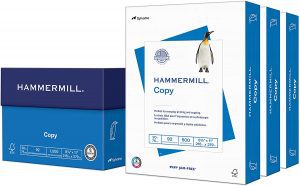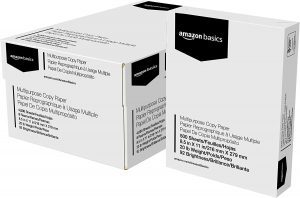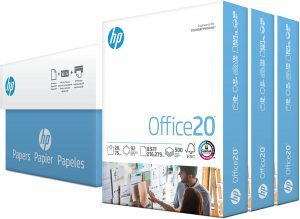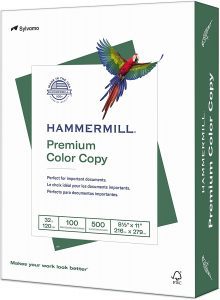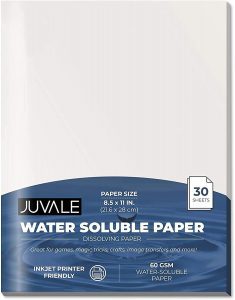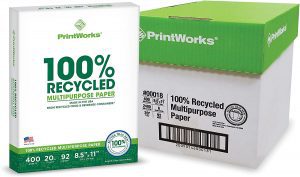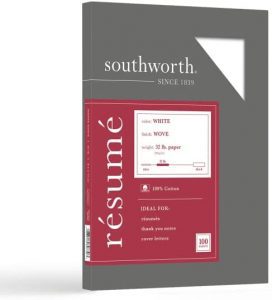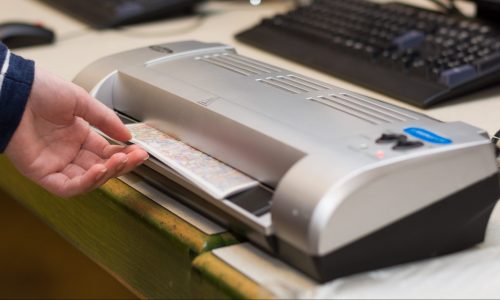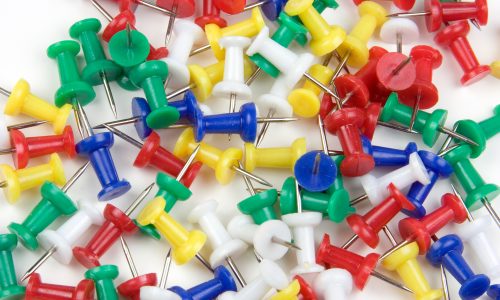The Best Paper
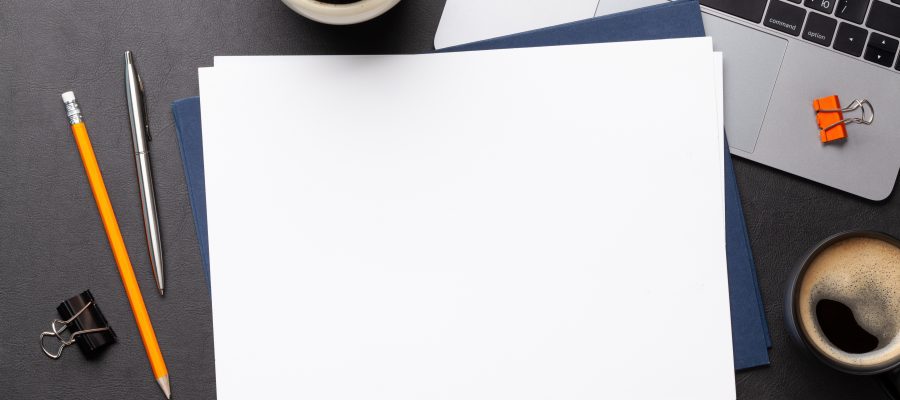
Our Review Process
Don't Waste Your Money is focused on helping you make the best purchasing decision. Our team of experts spends hundreds of hours analyzing, testing, and researching products so you don't have to. Learn more.
Our Picks For The Top Papers
- 1. Hammermill 20 Lb Copy Paper, 1500-Sheets
- 2. Amazon Basics 20 Lb Multipurpose Paper, 4000-Sheets
- 3. HP Papers 20 Lb ColorLok Technology Printer Paper, 1500-Sheets
- 4. Hammermill 32 Lb Premium Color Copy Paper, 500-Sheets
- 5. Juvale Water Soluble Printer Paper, 30-Sheets
- 6. PrintWorks 20 Lb 100% Recycled Multipurpose Paper, 2400-Sheets
- 7. Southworth 32 Lb 100% Cotton Resume Paper, 100-Sheets
You get three reams of letter-sized copy paper with this option. It's made to reduce the chances of ink smearing, has a bright white surface and is made sustainably.
Versatile for Basic UsesThis quality copy paper is especially a good choice for printing text documents but is versatile for other uses too.
Including eight reams, this letter-size paper option can last a long time whether you're an occasional or frequent printer. It offers high brightness and a surface that can handle multiple printer types.
Provides Large SupplyIf you need a budget-friendly choice for high-volume use, you get 4,000 sheets with this option.
Made to dry quickly and offer good color, this pack of three reams works well for most home office uses. It comes in letter size with the typical brightness of 92 and a weight of 20 pounds.
Good for Frequent UseThis option is a good choice when you use a lot of paper and want good color quality.
Coming in a standard ream of 500, this heavyweight paper comes with a maximum brightness and a glossy finish. These properties make it a good choice for photo printing.
Ideal for PhotosIf you need to print documents with a glossy finish, this paper provides durability and printer compatibility.
Buying Guide
Whether you’re using paper to print photos or just basic documents, you’ll need to have the right type for the job. Since you might not notice much physically different when you look at packs of paper from multiple manufacturers, it can be hard to know which to choose. This means you’ll need to consider factors such as the paper’s purpose, size, weight, brightness and finish.
You’ll often see paper labeled as multipurpose, copy, laser, inkjet, photo or cardstock paper. While the laser and inkjet options are made for use with their respective printer types, multipurpose and copy paper may be thinner and can work with any printer. Photo paper is thicker and more suitable for printing vibrant photos. Cardstock paper, on the other hand, is very thick and may not work in all printers.
Paper most often comes in letter size and measures 8.5 inches by 11 inches for wide compatibility with printers and document types. Another common option is the legal size that measures longer at 8.5 inches by 14 inches. You can find other larger and smaller paper sizes for special purposes too. For example, photo paper can come in typical picture sizes such as 3 inches by 5 inches, 5 inches by 7 inches or 8 inches by 10 inches.
Paper comes in multiple weights in pounds that will affect the price, expected durability and suitability for different uses. The heavier the paper, the more durable and opaque it will be. The standard paper weight is 20 pounds and is thin and suitable for printing basic documents and emails. Mid-weight paper runs from 22 to 24 pounds and is more durable for important documents such as resumes and contracts. Heavyweight paper with a weight of 24 pounds or more offers high durability, but it costs more and is mostly used for greeting cards, signs and other documents you need to last long.
While most everyday paper options are white in color, you’ll find differences in the brightness. Brightness scales go up to 100, with most paper ranging from 80 and up. A brightness of 92 is common for printer paper, and this kind of higher brightness ensures the image won’t come out too dark.
You’ll also want to be aware of any finish or technology the paper has. For example, you can choose between matte and glossy photo paper to fit the desired look. Other types of printing paper can have special properties to make colors look better.
What to Look For
- Most often, you can expect to get 500 sheets of paper since that’s the number in a standard ream. If you go through paper quickly or just want to not have to buy any for a long time, you might seek options that provide you with 1,500 sheets or more. Larger quantities might also be easier on your budget when you calculate the price per page, so you can do the math to find out.
- While much of the everyday paper you find will be white, you can also opt for paper in pastel colors and even neon shades. You might find colored paper handy for making eye-catching flyers or creating craft projects. If you do use this paper, however, you’ll want to make sure the color doesn’t clash with the ink colors of whatever you’re printing.
- If you’re printing on heavyweight paper, you’ll want to make sure your printer can handle the specific weight since some can’t. When using a standard home printer, you’ll run into the most problems with cardstock with a weight of 80 pounds or more. Even if your printer can handle such heavy paper, be safe and do a test print before printing out something important.
- Consider whether any special paper qualities interest you. For example, some manufacturers sell sustainable paper from recycled materials if you’re concerned about the environment. Another unique option is water-soluble paper that breaks down fast once put in water; this is handy for science experiments or magic tricks.
More to Explore
If your everyday activities involve dealing with significant paper, you likely have seen the issues that can come with waste. In fact, you might go through 10,000 sheets alone this year if you work in an office, and you might not even really need half of these pages. Not only can using so much paper get expensive, but it also creates an environmental strain to produce due to the wood pulp and water required.
You can take some steps to save paper by only printing what you need to have physically versus digitally, considering recycled paper products and making double-sided prints. You can also always reuse old paper and put unneeded paper in the recycling bin instead of trash.

